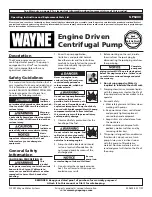
160
Instantaneous Speed Observer
Outline
This function enables both realization of high response
and reduction of vibration at stopping, by estimating
the motor speed using a load model, hence improv-
ing the accuracy of the speed detection.
Applicable Range
This function can be applicable only when the following conditions are satisfied.
Caution
This function does not work properly or no effect is obtained under the following conditions.
How to Use
(1) Setup of inertia ratio (SV.Pr20)
Set up as exact inertia ratio as possible.
• When the inertia ratio (SV.Pr20) is already obtained through real-time auto-gain tuning and is appli-
cable at normal position control, use this value as SV.Pr20 setup value.
• When the inertia ratio is already known through calculation, enter this calculated value.
• When the inertia ration is not known, execute the normal mode auto-gain tuning and measure the
inertia ratio.
(2) Adjustment at normal position control
Refer to P.153, "Adjustment at Position Control Mode".
(3) Setup of instantaneous velocity observer (SV.Pr27)
• You can switch the velocity detecting method to instantaneous velocity observer by setting up SV.Pr27
(Velocity observer) to 1.
• When you experience a large variation of the torque waveform or noise, return this to 0, and reconfirm
the above cautions and (1).
• When you obtain the effect such as a reduction of the variation of the torque waveform and noise,
search an optimum setup by making a fine adjustment of SV.Pr20 (Inertia ratio) while observing the
position deviation waveform and actual speed waveform to obtained the least variation. If you change
the position loop gain and velocity loop gain, the optimum value of the inertia ratio (SV.Pr20) might
have been changed, and you need to make a fine adjustment again.
Control mode
Encoder
Conditions under which the instantaneous speed observer is activated
• Control mode to be position control. (SV.Pr02 = 0)
• 7-wire absolute encoder
Load
Others
Conditions which obstruct the instantaneous speed observer effect
• Gap between the estimated total load inertia (motor + load) and actual machine is large.
e.g.) Large resonance point exists in frequency band of 300[Hz] or below.
Non-linear factor such as large backlash exists.
• Load inertia varies.
• Disturbance torque with harmonic component is applied.
• Settling range is very small.
Velocity
control
Velocity
command
Torque
command
Load model
Motor
Encoder
Servo driver
Load
Estimated
velocity
value
Position control
Motor
position
(Total inertia)
Instantaneous
speed observer
Current
control
Motor
current
Manual Gain Tuning (Application)
















































